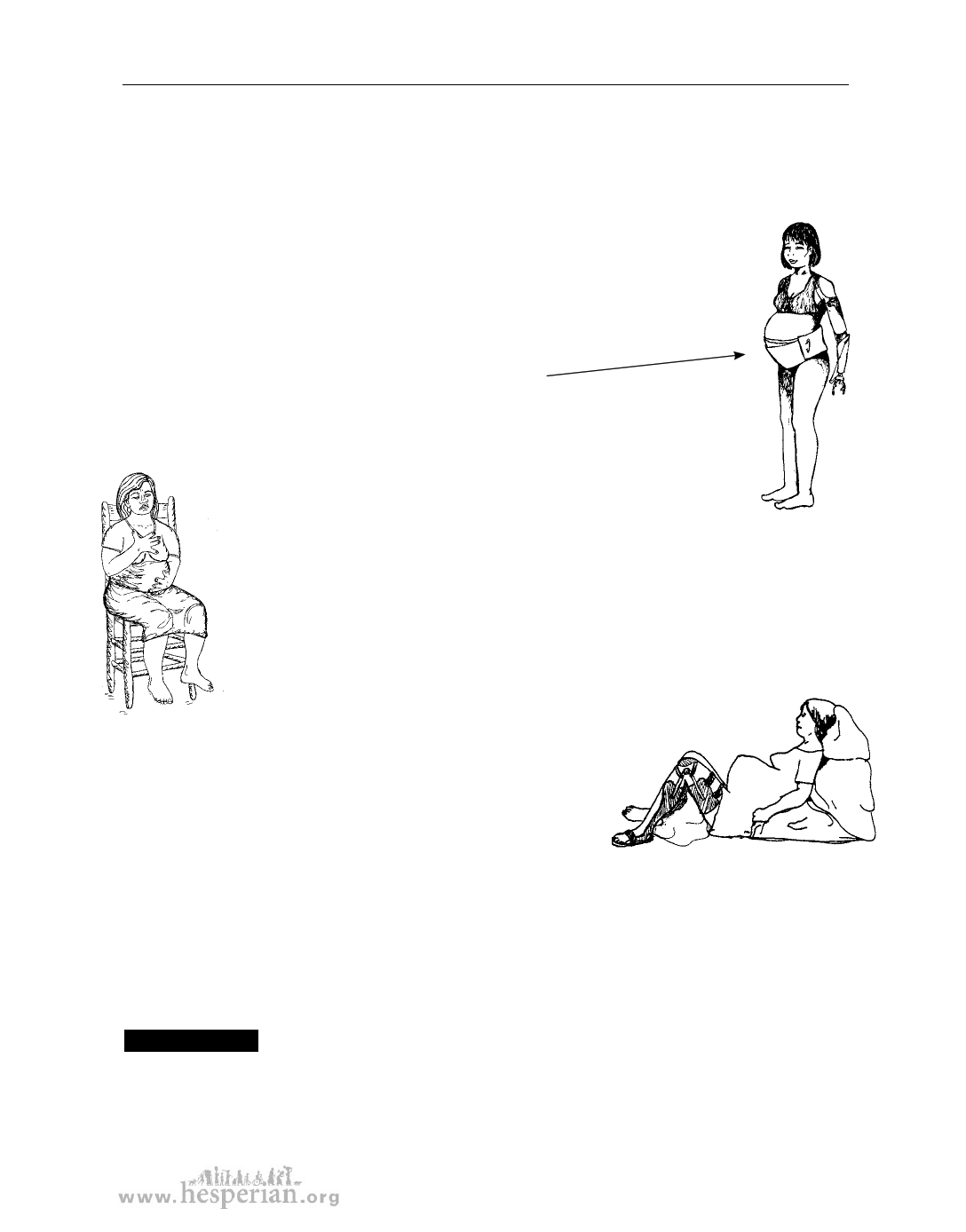
Discomforts during pregnancy 227
What to do:
• Exercise before, during, and after pregnancy to stretch and strengthen the
muscles in the lower back and to keep the muscles in the belly strong.
Swimming is a good way to reduce back pain and to stay strong.
• Sit in a straight-backed chair.
• Rest, heat, and massage on the painful area can help reduce back pain.
A binder of cloth may help to support your belly so it does
not pull so much on your back muscles.
• Wind a piece of clean, thin cotton cloth, about 4 to 5 feet
long (1½ meters) around your belly like this.
• Do not wind it so tight that it is uncomfortable.
• You can keep it in place with a safety pin, or you can tuck
in the end of the cloth.
Breathing Difficulties
As the baby grows, it pushes against the mother’s lungs and she has
less room in her chest to breathe. This is normal in pregnancy. But
women with some physical disabilities, such as short stature (dwarfism)
or paralysis of the chest muscles, can get short of breath earlier in the
pregnancy than other women. The baby gets oxygen from the mother’s
lungs, so a pregnant woman must keep her lungs clear and healthy for
the developing baby to get all the oxygen it needs.
What to do:
• Sleep sitting up a little. You will be more comfortable
if you put something under your knees.
• Drink water often, at least 8 glasses a day. This will
help mucus in the lungs stay loose so it is easier to cough up. Mucus in the lungs
can cause an infection.
• Get regular exercise.
• If you start coughing up phlegm (mucus with pus), see a health worker. You
may need to take medicine, like antibiotics. A health worker can help you decide
which antibiotic or other medicine is safe to take while you are pregnant.
important If a mother is having difficulty breathing and is also weak and tired,
or if she is short of breath all the time, she should see a health worker. She may have
heart problems and need medical care. Or she could have anemia (see page 87), a
poor diet, an infection, or she may be depressed (see page 54).
A Health Handbook for Women with Disabilities 2007